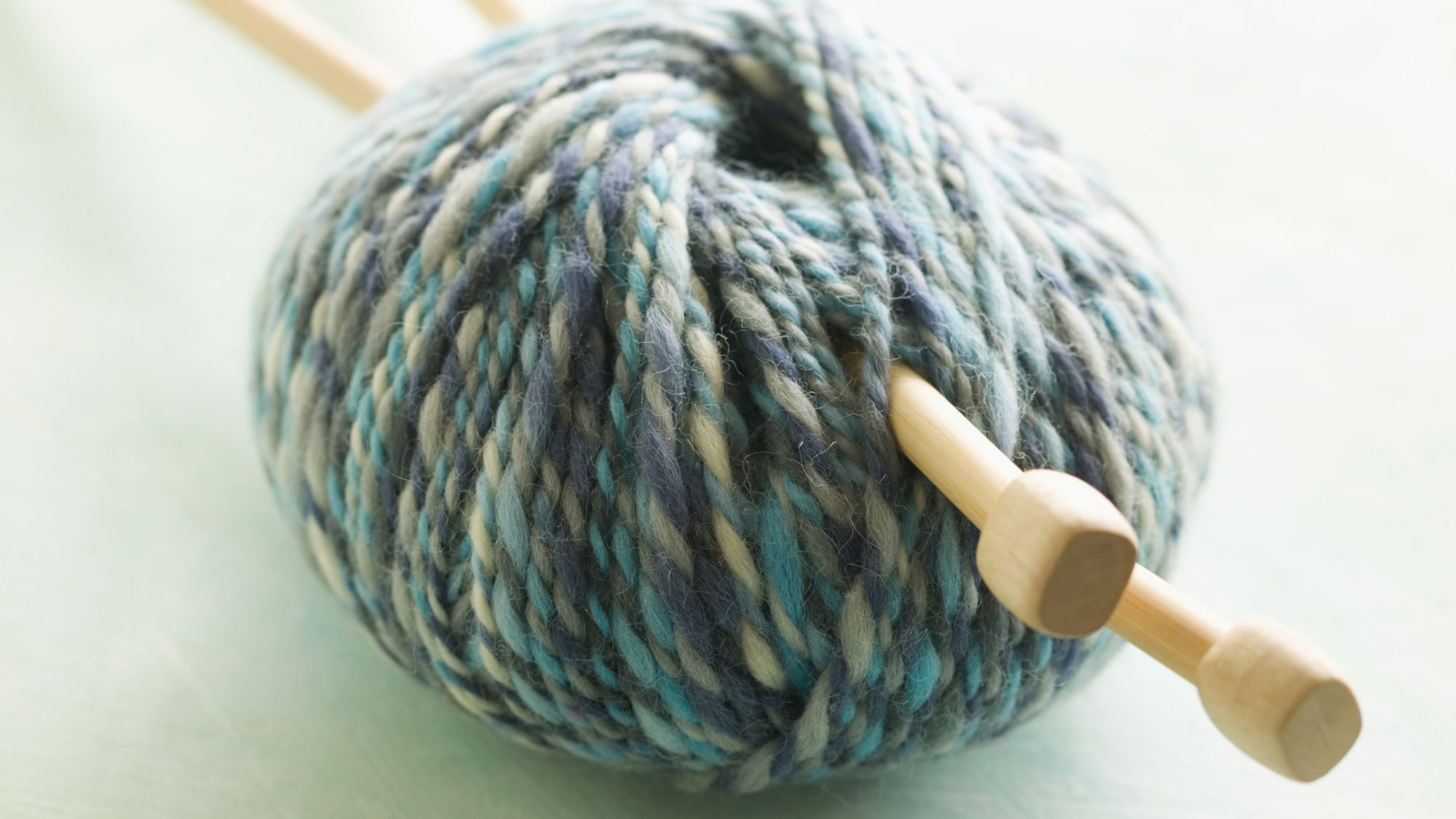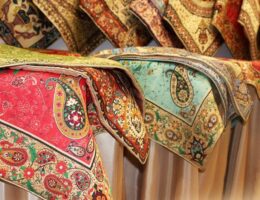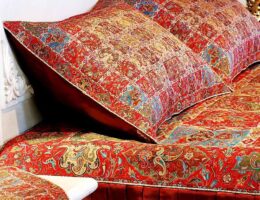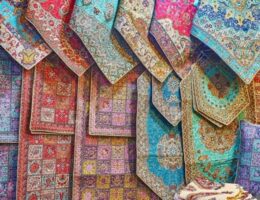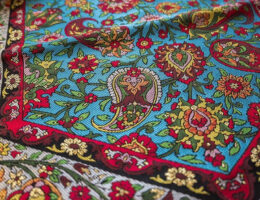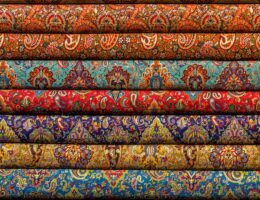IRAN ART EXHIBITION: WHAT IS KNITTING PRODUCT?
knitting, production of fabric by employing a continuous yarn or set of yarns to form a series of interlocking loops. Knit fabrics can generally be stretched to a greater degree than woven types. The two basic types of knits are the weft, or filling knits—including plain, rib, purl, pattern, and double knits—and the warp knits—including tricot, raschel, and milanese. In knitting, a wale is a column of loops running lengthwise, corresponding to the warp of woven fabric; a course is a crosswise row of loops, corresponding to the filling.
Most filling knits can be made by hand or machine, although commercial fabrics are generally machine-made. Basic stitches are the knit stitch, a loop passed through the front of the preceding loop, and the purl stitch, drawn through the back. Some filling knits are fragile because of the dependency of each loop in a vertical row on the stitch next to it. Runs can occur when one loop breaks, releasing other loops in the same row. Filling knits have the greatest amount of stretch in the crosswise direction. The plain knits, also called flat knits, have a flat surface, with short, horizontal loops visible on the back. When produced by hand knitting, this structure is called stockinette. Pile-surfaced fabrics produced by variations of the plain knit include velour and fake furs. Rib knits have pronounced lengthwise ribs formed by wales alternating on both sides of the fabric. These knits are fairly heavy, have good elasticity, and are more durable than the plain knits. Purl knits have horizontal ridges running crosswise on both the face and the back of the fabric, making them reversible. Pattern knits, such as those of fisherman knit sweaters, are produced by varying the manner in which the knit and purl stitches are used. Because the knit stitch tends to advance and the purl stitch to recede, a variety of patterns can be made by adding, dropping, alternating, or crossing stitches. Double knits are heavy and firm and rarely run. They are produced only by machine, with a variation of the rib stitch, the interlock stitch, employing two yarns and two sets of needles, with loops drawn through from both directions.
IRAN ART EXHIBITION: Warp knits, also produced only by machine, are usually run-resistant and are closer, flatter, and less elastic than filling knits. They are made on a chain loom, with each warp controlled by a separate needle. The loops interlock along the length of the fabric. Tricot is characterized by fine, vertical wales on the surface and crosswise ribs on the back. It has good draping qualities and is frequently used for lingerie and as backing for laminated fabric. Raschel knits have a lacelike, open construction, with a heavy, textured yarn held in place by a much finer yarn. Raschels can be made in a variety of types, ranging from fragile to coarse, and usually have limited stretch. Milanese is made with two sets of warp, one moving downward to the left and the other downward to the right, with the diagonal crossing of the yarns producing a diamond effect on the back, and a fine rib showing on the surface.
Knit fabrics are produced in both flat and tubular form. Filling knits are most often tubular; warp knits are usually flat. Flat filling knits can be shaped by a process called fashioning, in which stitches are added to some rows to increase width, and two or more stitches are knitted as one to decrease width. Circular (tubular) knits are shaped by tightening or stretching stitches.

WHAT IS KNITTING?
Knitting is a method by which yarn is manipulated to create a textile or fabric; it is used in many types of garments. it may be done by hand or by machine.
it creates stitches: loops of yarn in a row, either flat or in the round (tubular). There are usually many active stitches on the knitting needle at one time. Knitted fabric consists of a number of consecutive rows of connected loops that intermesh with the next and previous rows. As each row is formed, each newly created loop is pulled through one or more loops from the prior row and placed on the gaining needle so that the loops from the prior row can be pulled off the other needle without unraveling.
Differences in yarn (varying in fibre type, weight, uniformity and twist), needle size, and stitch type allow for a variety of knitted fabrics with different properties, including color, texture, thickness, heat retention, water resistance, and integrity. A small sample of knitwork is known as a swatch.
What is weft and warp knittings?
IRAN ART EXHIBITION: There are two major varieties of knitting: weft knitting and warp knittings. In the more common weft knittings, the wales are perpendicular to the course of the yarn. In warp knittings, the wales and courses run roughly parallel. In weft knitting, the entire fabric may be produced from a single yarn, by adding stitches to each wale in turn, moving across the fabric as in a raster scan. By contrast, in warp knittings, one yarn is required for every wale. Since a typical piece of knitted fabric may have hundreds of wales, warp knittings is typically done by machine, whereas weft knittings is done by both hand and machine. Warp-knitted fabrics such as tricot and milanese are resistant to runs, and are commonly used in lingerie.
